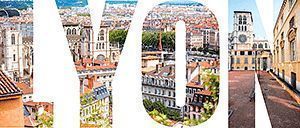Archaeological Treasures of Lyon: Reading the 3D City of Lugdunum
Didac Trave Martos • August 24, 2025
A 3D journey through Roman Lyon: from theatres and temples
What the 3D video shows (a viewer’s guide)
Use this as a scene-by-scene checklist while you watch.
- The confluence landscape – Two rivers (Saône foreground, Rhône to the east) with islands and marshy banks at the southern tip. A thinner, more braided river system than today.
- Fourvière plateau (civic heart) – Terraced platforms with the Theatre (c. 15 BC) and Odeon (2nd c.), porticoes and a large forum terrace above the slopes.
- Croix-Rousse plateau (imperial cult) – The Amphitheatre of the Three Gauls (early 1st c. AD for the imperial cult) near today’s slopes; look for the elliptical bowl tucked against the hillside.
- The Saône port – Quays, horrea (warehouses) and river craft at the foot of Fourvière; this is the working waterfront of Lugdunum.
- Presqu’île grid – A rectilinear street grid with workshops and housing, but still interspersed with gardens and floodable land; more open than the modern city.
- Loyasse gate & Ocean Road – On the NW edge of Fourvière: a monumental gate with a circular tower base and a wide paved carriageway (Ocean Road) heading north-west; note the defensive ditch that later cuts the road (linked to the AD 197 battle).
- Aqueduct logic – You may glimpse channels/arcades feeding the plateau (Gier, Yzeron, etc.); water arrives high, then distributes down terraces.
-
Reading the landscape: geology first, city second
- Hills define functions: Fourvière (civic/elite terraces), Croix-Rousse (cult/administration at the amphitheatre), low banks for ports and crafts.
- Rivers still wild: Multiple channels/islands at the confluence. Seasonal floods shape where Romans build stone embankments and where they keep gardens or roads.




